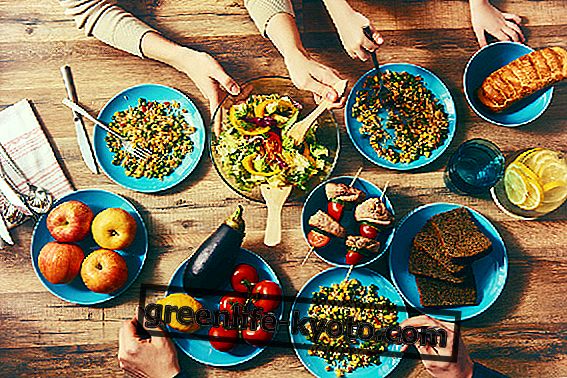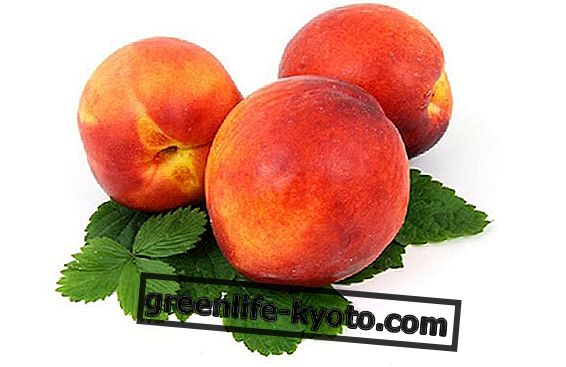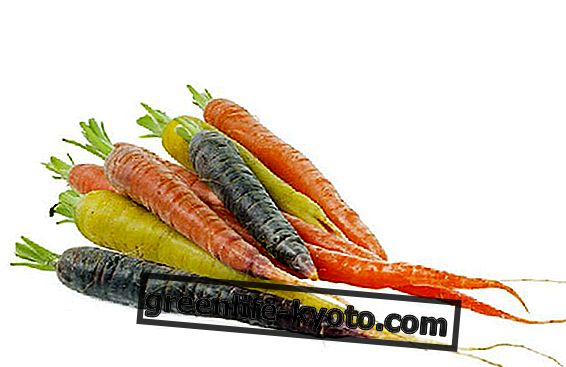
A Journey is not only a visual encounter, but becomes a perfume, it picks up sounds, combines new flavors and textures that gradually merge and become living matter within us; these synesthesia of the world transform us, carried by the wind, the sun and the rain, becoming in turn steps and looks, fatigue and joy; it is by accepting all this that we become better.
Like Marguerite Yourcenar, who did not wish to "digest suffering", here too is the proposal of a journey among ethnic flavors and vegan recipes from various countries of the world that the author, Ramona Galletta, met during her journey: reading the pages of this book we feel transported from Europe, to the African beaches, passing through the Americas and the immense Asia.
Vegan recipes from other worlds
The text contains a series of original recipes (more than 130!) To discover and learn, which accompanied the author during her travels : by experimenting with these dishes, you will travel or return to beloved places far away.
Here, as the biologist and nutritionist Sabina Bietolini explains in the preface to the book " a collection of ethnic recipes, centered on the common denominator of the absence of animal ingredients, allows us to fully appreciate the innumerable nutritional combinations that each culture in the rest of the world has adopted every day on your table, offering valid alternatives to local dishes, as well as food for thought on the nutritional, ecological and ethical aspects of the (non) consumption of animal proteins ".
The recipes do not follow a precise subdivision, by geographical area or by type of dishes or ingredients, but they are simply proposed in alphabetical order with their original name.
It starts with a Nigerian dish, called Adalu, composed of corn and beans, and then continues with the Akaras, Nigeria's bean fritters, and the more famous Aloo tikki, potato balls and vegetables from India.
In addition to Indian meatballs, different ways of preparing falafel, with broad beans, with chickpeas from the Middle East or Palestine are shown; from Turkey the lentil -based Mercimek koftesi meatballs; they are often poor, but incredibly tasty, dishes like the Fattoush middle eastern bread salad .
Curious are the new ways and combinations for cooking simple vegetables, such as asparagus with Israeli oranges, broccoli with coconut from Indonesia; or the use of fruit for salads with exotic aromas, such as the delicious papaya and peanut salad, Gol du du, Vietnamese, or the salad of cucumbers and peanuts from India. And from South America, three different ways to prepare quinoa.
Sauces or creams from the world are present, such as the pine nut cream from Tunisia with the unpronounceable name 'Assida zgougou, or the Bessara bean puree from Egypt, which is reminiscent of the Apulian favetta, and also the tomato and corn cream from Mexico. Among the soups, here is the green bean soup from Mozambique or the Tarka dal, Indian pea soup or the Moroccan barley soup, of coconut and legumes from Tanzania or peanuts from the Congo.
There is no lack of scones and pancakes, such as the Buñuelos of Mexico or the Arepas, corn muffins from Venezuela, the Indian Chapati and the lesser known Injera, Ethiopian bread, the basic dish of Eritrean cuisine prepared with teff flour, a cereal originating from Ethiopian highlands. The Malawach, the Yemen crepes are also curious .
You will also find sweet preparations, such as Halawah temar, a dessert of dates, and a sesame cake, both from Iraq . From Zanzibar, the tarte-tatin, but of bananas!

El Gallo pinto, no pinta, is a recipe!
Perhaps the most curious dish, above all for the name Gallo Pinto, which recalls a children's song, is precisely this nice and complete vegan recipe from Costa Rica. The " gallo pinto, no pinta, él que pinta es el pintor ", indeed it is really a dish based on rice and beans, which often accompanies eggs, here's the recipe.
Ingredients :
> 6 cups of Mexican black beans,
> 6 of brown rice,
> 2 onions,
> an avocado,
> a tomato,
> fresh coriander,
> vegetable cream,
> extra virgin olive oil, salt and pepper.
Preparation : after soaking them, boil the beans, cooking them for about 40 minutes. Chop a white onion and add it to half of the chopped coriander and coarsely chopped tomatoes, season with oil.
Then take a pan and add the rest of the onion and the chopped coriander, sauté for a few minutes; then add the boiled beans, then salt, pepper, the tomato and onion mixture, and the rice. Cook over low heat for the indicated time, stirring occasionally. Sevire accompanied with slices of avocado and vegetable cream.
Nb. Certainly it is often not easy to find certain ingredients, but taking a ride in the ethnic shops of the big cities you should find everything easily!













